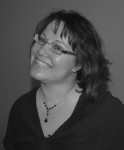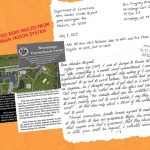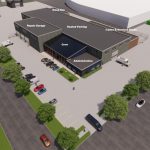Showing students on the pathway to college
“Education is the most powerful weapon which you can use to change the world.” — Nelson Mandela
There was never a question that I would go to college. If you’re like me, you grew up in a home where college was a given, where your parents went to college and your siblings did too. The only question was where you were going and what you would study.
But that culture and mindset is not universal. There are large areas in our own community where college is as foreign a concept as hopping on a spaceship and flying to Mars. There are families with no history of college attendance to be emulated. It is this void that is quietly being filled by the Pathways to College program.
Pathways is sponsored by Wisconsin Lutheran College to aid lower income, first generation college prospects with the potential to succeed in college. Started in 2007 with 44 sixth-graders, the program has grown to 125 students enrolled in grades 6-9 this summer.
Pathways has three components – Pathways Prospects for Kindergarteners through 5th graders introduces students and parents to the idea of college and the financial planning necessary for success; Pre-College for students in grades 6-12 focuses on the academics and social skills necessary for college; and Parents provides them with the mentoring, support and skills they will need to prepare and support their children in college.
“We focus on the academics, socialization, spirituality and financial aspects of getting to college,” said Pathways Director Milton Cockroft. Spirituality is woven into the discussion of life skills, while financial preparation involves money management and education investment workshops, along with the establishment a scholarship fund for program graduates to use for college costs.
Academics are the focus of Pathways weekly College Prep Center, currently held after school at an inner-city church. Book clubs, computer-aided coursework and individual tutoring are all used to close the academic gaps some of the students are struggling with and also to build excitement for school.
“It is just amazing to see a student struggling with reading at the beginning of the school year begging to read aloud a few months into the program,” Cockroft said.
Throughout the school year students and their parents attend Saturday sessions at WLC, exposing them to the college environment. While the students are becoming acquainted with college concepts and their peers, their parents attend workshops on money management, life skills and ways to support their children’s dreams.
Seventh and eighth grade participants also attend leadership exercises at St. John’s Northwestern Military Academy in Delafield.
The highlight of the program is a 2-week intensive “summer camp” held at WLC and led by college students and professors. 6th-8th graders take classes in art, drama, English composition, robotics, marine biology and public speaking, along with breaks for recreation and meals.
I stopped into one class where 7th graders were busily constructing robotic cars. Teams of two were cooperating on the construction, learning by trial and error the mechanics of engineering. When the cars are complete, the class will learn how to use JAVA language to control their cars through a series of distance trials and obstacle courses.
While it may look like fun and games, Professor David Schulz said the students will make use of algebra, geometry and trigonometry skills to determine angles and turns for their computer code.
“I’m really having fun,” one student said as he gently attached a small wheel on his car. “I’ve been to other college-prep camps and this one is the best.”
In another classroom, students were putting together human skeletons. In addition to learning the names and placements of the 206 bones, the kids were looking for markers to determine if the skeleton was male or female, old or young and what type of life they had lived. The professor began the week by telling the students that the remains were from Pompeii, allowing for the additional discussion of history and archeology.
A drawing class was not focused solely on art. Instead, the eight students were enamored with Paco the dancing Parrot. After studying the habitat and background of parrots and Paco, the kids were eager to share their knowledge with the teacher. Did you know that parrots have white bellies so they look like clouds when flying, disguising themselves from predators below? These students do.
Cockroft said the program has been successful, judging by participation numbers. While Pathways deals with the same type of attrition as many schools and programs in the inner city, it has continued to grow — to the point where they need more space for the future. A little under half of the students who started in 2007 are still in the program, entering the ninth grade this fall.
Pathways and the various schools the children attend will begin this fall will work together to track grade improvement and other areas in which the program can help its participants.
Pathways recently purchased the old Finney Library on the corner of North Ave. and Sherman Boulevard from the city of Milwaukee. City Council President Willie Hines welcomed the new use for the long-vacant building.
“Finding the right fit for this location has been a long and arduous process,” said Hines, who lives just a few blocks from the building. “But I think all of us are grateful for the final outcome. This is exactly what our community needs. Wisconsin Lutheran College will bring its proven track record to a neighborhood that desperately needs its young people to become more aware of higher education and the opportunities it can provide.”
The new location will be called the “Center for College Success” and contain classrooms, a kitchen area, a room for parents to obtain information on school and job opportunities and will also have a large computer and research center. This area is greatly needed since the program will have its first high school students this year who will focus more on academics and study skills than before.
Cockroft is enthusiastic for the new high school students in the program and the new campus. “This will provide us with the space and resources to serve more students,” he said. “This will help us meet our goal to prepare first generation college students to attend the college of their choice.”
If you would like to help Pathways to College meet that goal, please click here.























